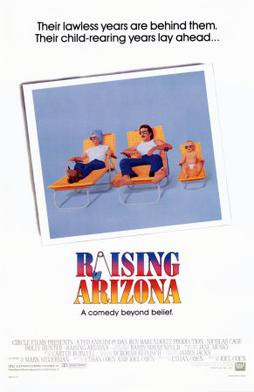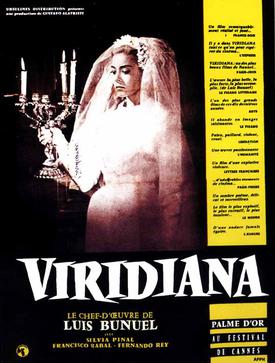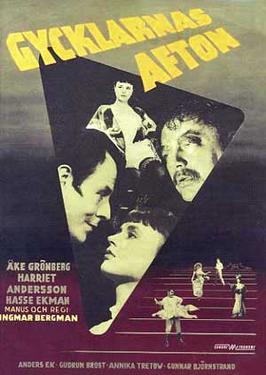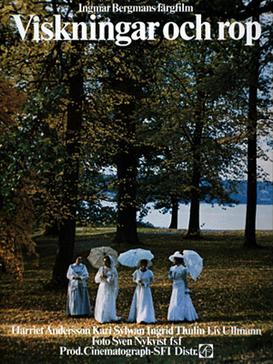A blog formerly known as Bookishness / By Charles Matthews
"Dazzled by so many and such marvelous inventions, the people of Macondo ... became indignant over the living images that the prosperous merchant Bruno Crespi projected in the theater with the lion-head ticket windows, for a character who had died and was buried in one film and for whose misfortune tears had been shed would reappear alive and transformed into an Arab in the next one. The audience, who had paid two cents apiece to share the difficulties of the actors, would not tolerate that outlandish fraud and they broke up the seats. The mayor, at the urging of Bruno Crespi, explained in a proclamation that the cinema was a machine of illusions that did not merit the emotional outbursts of the audience. With that discouraging explanation many ... decided not to return to the movies, considering that they already had too many troubles of their own to weep over the acted-out misfortunes of imaginary beings."--Gabriel García Márquez, One Hundred Years of Solitude
Search This Blog
Friday, March 25, 2016
Raising Arizona (Joel Coen and Ethan Coen, 1987)
Raising Arizona was the Coen brothers' second movie, and they never made another quite as broadly comic as this one. Even The Big Lebowski (1998) and O Brother, Where Art Thou? (2000) seem restrained in comparison. I found that it took a little getting used to on this viewing: Everyone in it (including the baby) is a caricature, a live-action version of a Warner Bros. cartoon character. Maybe I reacted this way because I recently saw Holly Hunter in the deadly serious role of Ada in The Piano (Jane Campion, 1993) and had forgotten what a gifted farceuse she could be when she sets her tight little mouth in that determined line and barrels ahead. Nicolas Cage was still in that goofy hangdog persona he used in Peggy Sue Got Married (Francis Ford Coppola, 1986) and only began to grow out of the next year in Moonstruck (Norman Jewison, 1987). But the real surprise for me was Frances McDormand, going completely over the top as Dot, the scatterbrained mother of the most odious bunch of brats ever seen on film. She was at the beginning of her career as a serious actress and would follow up Raising Arizona with her first Oscar nomination for Mississippi Burning (Alan Parker, 1988), so seeing her go all loosey-goosey in this film was a revelation. It's by no means among my favorite Coen brothers movies, and watching it in the company of their best -- among which I'd put Fargo (1996), No Country for Old Men (2007), and Inside Llewyn Davis (2013) -- would probably show up some of its flaws, but why would you want to do that? Sometimes silly fun is enough. At only a touch over an hour and a half, Raising Arizona doesn't hang around long enough to wear out its welcome.
Thursday, March 24, 2016
Viridiana (Luis Buñuel, 1961)
TCM this month has been running a series of movies condemned by the Catholic Legion of Decency, with commentary by Sister Rose Pacatte. Sister Rose doesn't have a lot of screen presence, but she does a good job of explaining why the Legion in its heyday found the movies objectionable -- and suggesting why they really aren't. It's hard to believe today that Viridiana, with its heavily moral tone, was once considered blasphemous, but ours is a day when anything sacred is routinely held up for scrutiny. It's the first work of Buñel's greatest period as writer-director, and while it doesn't quite rise to the exalted standard of Belle de Jour (1967) or The Discreet Charm of the Bourgeoisie (1972), it wrangles effectively with their topics, including middle-class morality and the repressive element of Catholicism. Silvia Pinal gives the title role credibility, moving from naïveté through disillusionment to a final note of ambiguity: Has Viridiana truly fallen from the grace she has so ardently sought? The film is also a triumph of casting, not only in the key roles of Don Jaime (Fernando Rey), Viridiana's lecherous, tormented uncle, and Jorge (Francisco Rabal), his equally lecherous but profoundly untormented bastard son, but also Margarita Lozano as Ramona, Don Jaime's and later Jorge's maid-mistress, and Teresa Rabal as Rita, Ramona's sly, sneaky daughter, And then there's the gallery of grotesques, the beggars whom Viridiana naively takes in and tries to care for. Is there a more horrifying scene than the one that culminates in Buñuel's famous parody of Leonardo's The Last Supper, in which the beggars nearly destroy Don Jaime's house, which Jorge is trying to restore? It can be argued that the avaricious Jorge gets what's coming to him, of course, but Buñuel is never as simplistic as that, viz., the deep ambiguity of the closing scene in which the virtuous Viridiana has let down her hair and forms a threesome -- at the card table but where else? -- with Jorge and Ramona.
Wednesday, March 23, 2016
The King of Comedy (Martin Scorsese, 1982)
Is there anything scarier than Robert De Niro's smile? It's what makes his bad guys, like Travis Bickle in Taxi Driver (Martin Scorsese, 1976) or Max Cady in Cape Fear (Scorsese, 1991), so unnerving, and it's what keeps us on the edge of our seats throughout The King of Comedy. Rupert Pupkin isn't up to anything so murderous as Travis or Max, but who knows what restrains him from becoming like them? As a satire on the nature of celebrity in our times, Paul D. Zimmerman's screenplay doesn't break any new ground. But what keeps the movie from slumping into predictability are the high-wire, live-wire performances of De Niro and Sandra Bernhard as the obsessive fans and the marvelously restrained one of Jerry Lewis as late night talk-show host Jerry Langford, the object of their adulation. And, of course, Scorsese's ability to keep us guessing about what we're actually seeing: Is this scene taking place in real life, or is it a product of Rupert's deranged imagination? That extends to the movie's ending, in which Rupert, having kidnapped Langford and engineered a debut on network television, is released from prison and becomes a celebrity himself. Are we to take this as the film's comment on fame, like the phenomenon of Howard Beale in Network (Sidney Lumet, 1976) and any number of people (many of them named Kardashian) who have become famous for mysterious reasons? (Incidentally, the odd thing about Rupert's standup routine is not that it's bad, but that it's exactly the sort of thing that one might have sat through while watching a late night show in 1982.) I prefer to think that we are still in Rupert's head at film's end -- it seems less formulaic that way. I don't know of a movie that stays more unbalanced and itchy from scene to scene.
Tuesday, March 22, 2016
The Piano (Jane Campion, 1993)
If Jane Campion had gone with her original plan, Ada (Holly Hunter) would have gone down with her piano like Ahab lashed to the whale. The comparison to Moby-Dick is not, I think, terribly far-fetched: The Piano is one of those works, like the Melville novel, that tempt one into symbolic interpretations. Ada's obsession with her piano is, in its own way, like Ahab's obsession with the white whale, a kind of representation of the extreme irrational nexus of mind and object. But in Campion's completed version, Ada loses only a finger, not her life, and the piano is replaced along with the finger. Does this resort to a happy ending vitiate Campion's film, or should we accept as a given that life does in fact sometimes work that way? I think in a movie as enigmatic as The Piano so often is, Campion has blunted the emotional impact by having Ada and Baines (Harvey Keitel) wind up together in what seems to be a pleasant home far from the wilderness in which most of the film takes place, she teaching piano with her hand-crafted prosthetic and learning to speak, as Flora (Anna Paquin), that devious, semi-feral child, turns cartwheels. (Flora puts me in mind of another child of the wilderness in another work of impenetrable symbolism, Pearl in The Scarlet Letter.) Happily ever after seems like a lie in the mysterious terms with which the film began. We never learn why Ada turned mute, or who Flora's father was and what happened to him, or why she agrees to move to New Zealand to marry and then spurn Stewart (Sam Neill), or find a way to resolve any number of other enigmas. But the great strength of the film lies its power to evoke the imponderable, to make us wonder about Baines's life among the Maori, about the persistence of an imperialist culture (women wearing hoopskirts and men in top hats) in an alien land, about the nature of awakening sexuality, about the function of art, about the tension between innocence and experience in a child's life, and so on. It is, I'm certain, a great film, just because it is so hard to grasp and reduce to a formula.
Links:
Anna Paquin,
Harvey Keitel,
Holly Hunter,
Jane Campion,
Sam Neill,
The Piano
Monday, March 21, 2016
The Devil's Eye (Ingmar Bergman, 1960)
 |
| Jarl Kulle and Bibi Andersson in The Devil's Eye |
Sunday, March 20, 2016
Sawdust and Tinsel (Ingmar Bergman, 1953)
When this movie was first released in the United States it was called The Naked Night, probably by exhibitors who wanted to cash in on the reputation Swedes had gained for being sexy, but especially because the film's star, Harriet Andersson, had just appeared in the nude in Summer With Monika (Ingmar Bergman, 1953), which had been passed off in some markets as a skin flick. By the time I first saw it, sometime in the 1960s, it had been renamed Sawdust and Tinsel. (The Swedish title, Gycklarnas Afton, can be translated as something like "Evening of a Clown.") Frankly, the first time I saw it, I found it tedious and heavy-handedly sordid, with its shabby, bankrupt circus and its frustrated, destructive relationships. Having grown older and perhaps somewhat wiser, I don't hate it anymore, but I can't see it as the masterpiece some do. It seems to me to lean too heavily on the familiar trope of the circus as a microcosm of the world, and on emphasizing the grunge (sawdust) and fake glamour (tinsel) of its currently prevalent title. What it has going for it is the awesome cinematography by Sven Nykvist: It was his first film for Bergman; they didn't work together again until 1960 and The Virgin Spring, but it became one of the great partnerships in filmmaking. The opening sequence of the tawdry little circus caravan trundling across the landscape is superbly filmed, and I can't help wondering if Bergman and Gunnar Fischer, the cinematographer of The Seventh Seal (1957), didn't have it in mind when they created the iconic shot of Death and his victims silhouetted against the sky in that later film. The performances, too, are excellent: Åke Grönberg as Albert, the worn-out circus owner; Andersson as his restless mistress, Anne; Hasse Ekman as Frans, the actor who rapes her; Anders Ek as the half-mad clown, Frost; and Annika Tretow as Albert's wife, who has gone on to be a success in business after he left her. But the story is heavily formula-driven: There is, for example, a rather clichéd sequence in which Albert toys with suicide, which too obviously echoes an earlier moment when Frans hammily rehearses a scene in which he kills himself while Anne watches offstage. In the end, the movie is rather like a version of Pagliacci without the benefit of Leoncavallo's music. After a disastrous performance of the circus, someone actually says, "The show's over," which is pretty much a steal from the final line of Pagliacci: "La commedia è finita!"
Saturday, March 19, 2016
Moulin Rouge (John Huston, 1952)
If Moulin Rouge had a screenplay worthy of its visuals, it would be a classic. As it is, it's still worth seeing, thanks to a stellar effort to bring to life Toulouse-Lautrec's paintings and sketches of Parisian nightlife in the 1890s. The screenplay, by Anthony Veiller and director Huston, is based on a novel by Pierre Le Mure, the rights to which José Ferrer had purchased with a view to playing Lautrec. He does so capably, subjecting himself to some real physical pain: Ferrer was 5-foot-10 and Lautrec was at least a foot shorter, owing to a childhood accident that shattered both his legs, so Ferrer performed many scenes on his knees, sometimes with an apparatus that concealed his lower legs from the camera. But that is one of the least interesting things about the movie, as is the rather conventional story of the struggles of a self-hating, alcoholic artist. What distinguishes the film is the extraordinary production design and art direction of Marcel Vertès and Paul Sheriff, and the dazzling Technicolor cinematography of Oswald Morris. Vertès and Sheriff won Oscars for their work, but Morris shockingly went unnominated. The most plausible theory for that oversight is that Sheriff clashed with the Technicolor consultants over his desire for a palette that reproduced the colors of Lautrec's art: The Technicolor corporation was notoriously persnickety about maintaining control over the way its process was used. It's possible that the cinematography branch wanted to avoid future hassles with Technicolor by denying Morris the nomination. (Ironically, one of the more interesting incidents from Lautrec's life depicted in the film involves his clashes with the lithographer over the colors used in posters made from his work.) The extraordinary beauty of the film and some lively dance sequences that bring to life performers such as La Goulue (Katherine Kath) and Chocolat (Rupert John) make it memorable. There are also good performances from Colette Marchand as Marie Charlet and Suzanne Flon as Myriamme Hayam. And less impressive work from Zsa Zsa Gabor, playing herself more than Jane Avril, and lipsynching poorly to Muriel Smith's voice in two songs by Georges Auric.
Friday, March 18, 2016
A Lesson in Love (Ingmar Bergman, 1954)
 |
| Eva Dahlbeck and Gunnar Björnstrand in A Lesson in Love |
David Erneman: Gunnar Björnstrand
Susanne Verin: Yvonne Lombard
Nix Erneman: Harriet Andersson
Carl-Adam: Åke Grönberg
Prof. Henrik Erneman: Olof Winnerstrand
Svea Erneman: Renée Björling
Pelle: Göran Lundquist
Director: Ingmar Bergman
Screenplay: Ingmar Bergman
Cinematography: Martin Bodin
In A Lesson in Love, Ingmar Bergman seems to be trying to turn Eva Dahlbeck into Carole Lombard. She certainly has Lombard's blond glamour, and she makes a surprising go at knockabout comedy. But where Lombard had the light touch of a Howard Hawks or an Ernst Lubitsch to guide her in her best work, Dahlbeck is in the hands of Bergman, whose touch no one has ever called light. A year later, the Bergman-Dahlbeck collaboration would make a better impression with Smiles of a Summer Night, but A Lesson in Love sometimes verges on smirkiness in its treatment of the marriage of Marianne and David Erneman. They are on the verge of divorce and she is about to marry her old flame Carl-Adam, a sculptor for whom she once posed. David is a gynecologist who has had a series of flings with other women, including Susanne, with whom he is trying to break up. But Marianne has not exactly been faithful to their vows either. Meanwhile, we also get to know their children, Nix and her bratty little brother, Pelle, and David's parents, who in sharp contrast to Marianne and David are celebrating 50 years of marriage. While Bergman sharply delineates all of these characters -- especially 15-year-old Nix, who hates being a girl so much that she asks her father if he can perform sex-change operations -- the semi-farcical situation he puts them has a kind of aimless quality to it. I appreciated Harriet performance as Nix the more for having seen her as the dying Agnes in Bergman's Cries and Whispers (1972) the night before, but in this film her role makes no clear thematic sense.
Thursday, March 17, 2016
Cries and Whispers (Ingmar Bergman, 1972)
Cries and Whispers is both of a time and timeless. It is very much a product of the last great moviegoing age, when people would see a challenging film and go back to their homes or coffee shops or dorm rooms and debate what it meant. Today, if a movie provokes discussion it's usually on social media, where seriousness gets short shrift. Moreover, the discussion is likely to get interrupted by someone who has just seen the latest installment of some hot TV series and wants to try out their theories. Moreover, the combination of visual beauty and emotional rawness in Bergman's film is something rarely encountered today. We are, I think, wary of emotion, too eager to lapse into ironic distancing from the depiction of disease, suffering, death, cruelty, passion, spite, and grief that permeates Cries and Whispers. No director I know of is trying to do what Bergman does in so unembarrassed a fashion in this movie. And that, in turn, is what makes it timeless: The emotions on view in the film are universal, and Bergman's treatment of them without melodrama or sentiment is unequaled. Personal filmmaking is becoming a lost art: There are a few prominent adherents to it today, such as Paul Thomas Anderson or Terrence Malick, and their films are usually greeted with a sharp division of opinion between critics who find them pretentiously self-indulgent and those who find them audaciously original. But we seldom see performances as daring as Harriet Andersson's death scene, Kari Sylwan's attempts to comfort her, Ingrid Thulin's self-mutilation, and Liv Ullmann's confrontations with the others. And we seldom see them in a narrative that teeters between realism and nightmare as effectively as Bergman's screenplay, in a setting so evocative as production designer Marik Vos-Lundh's, or via such sensitive camerawork as Sven Nykvist's. The film has often been compared to Chekhov, and for once it's a film that merits the comparison.
Wednesday, March 16, 2016
Big Eyes (Tim Burton, 2014)
It's a great idea for a movie: the downfall of a hugely successful artist who took the credit for the work done by someone else. It allows a filmmaker to explore such topics as fraud, the difference between capital-A Art and works that are just popular, the nature of value when it comes to works of the imagination, and in this case, the relationship between men and women. Walter Keane (Christoph Waltz) persuaded his wife, Margaret (Amy Adams), to let him pass off her work -- paintings of large-eyed waifs -- as his own. The trouble with the movie is that it never quite decides what it wants to say about any of the important issues it raises, other than that Margaret Keane was a victim of the male-dominated society of the 1950s and '60s. It doesn't even settle on the issue of whether Margaret's paintings were mawkish kitsch or actual works of Art, though I think it rather smugly assumes that viewers will be smart enough to have decided on the former. But it complicates this position by starting with a quote from Andy Warhol proclaiming that the Keane art is "terrific! If it were bad, so many people wouldn't like it." And it turns the critics of Keane into pretentious snobs, represented by the gallery owner (Jason Schwartzman) who resents the fact that the Keane paintings outsell his rather arid, minimalist abstractions, and by John Canaday (Terence Stamp), the New York Times critic who prevents a Keane from being exhibited at the 1964 World's Fair in New York. So what we are left with is Margaret Keane, the victim who finally has the courage to turn against her monstrously manipulative husband and become a hero. That she is a hero in the cause of women's rights is presumably fine. But is it also fine that she becomes a hero by asserting her right to profit from making bad art? I don't think either screenwriters Scott Alexander and Larry Karaszewski or director Tim Burton have decided for themselves. So we are left only with Adams's terrific performance as Margaret, which could have been bolstered by a fuller backstory, and Waltz's somewhat overdone performance as Walter. What Burton does best in his movies is milieu, especially when he can caricature it, which he does here, with a little more restraint than usual, in his portraits of the business of art in the 1960s. And he gets us into the head of Margaret Keane: When she is grinding out big-eyed paintings for Walter she goes to a supermarket and hallucinates the clerks and customers as big-eyed grotesques. But the movie probably should have gone more in one direction or another: Either into a realistic portrayal of the relationship of the Keanes or into a more vivid and surreal lampoon of the art world. Trying to do a bit of both undermines the film.
Subscribe to:
Comments (Atom)







